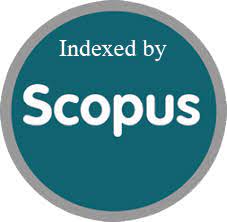A Comparison of Incidence and Factors Associated with Postanesthesia Care Unit Complication in Adult and Paediatric Patients
DOI:
https://doi.org/10.52783/jns.v14.3330Keywords:
postanaesthesia care unit complications, PONV, Pediatric patients..Abstract
Background: A post-anaesthesia care unit (PACU) provides specialized treatment to patients following surgery. The PACU is staffed by competent nurses who recognize patient issues during postoperative and rapid management. The most common PACU complications were respiratory, cardiovascular, and hypothermia. Post-operative nausea and vomiting, as well as the central nervous system. This complication may differ between adult and paediatric patients, depending on ASA grade, age, medication history, anaesthetic agents, type of surgery, duration of operation, intraoperative blood loss, fluid administration, hemodynamic instability, and so on. In the post-anaesthetic care unit, measures are carried out to ensure that the patient is carefully treated following surgery, such as recognizing and treating early anaesthesia and surgery problems before they become life-threatening. Recovering from anaesthesia, decreasing surgical mortality, and delivering high-quality care.
Methods: The study was conducted at A.C.S Medical College & Hospital in Chennai, with a quantitative technique and an observational study research design. Data collection and analysis were conducted on a sample of 100 patients (50 adult and 50 paediatric), utilizing questionnaires. The study excluded patients who were admitted directly to the ICU or ward.
Result: This study had 100 participants, with 50% being paediatrics and 50% being adults. We found significant differences in various PACU complications criteria, including difficulty breathing, postoperative nausea and vomiting, and operation length (p-value > 0.05). The majority of cases were paediatric rather than adult. In the post-anaesthesia care unit, there was a significant difference in post-operative pain assessments between groups, type of anaesthesia, and insomnia following surgery (p-value > 0.05).
Conclusion: This study compares the incidence of post-anaesthesia care unit complications in adult and juvenile patients. The findings clearly indicate that adolescent patients in the post-anaesthesia care unit were more problematic than adult patients. Based on our findings, we recommend the post-anaesthesia care unit team needs to develop area-specific institutional guidelines and protocols to improve the patients' quality of care and outcomes in post-anaesthesia care unit. Improved post-anaesthesia care for paediatric patients may reduce complications, length of hospital stays, and psychological distress.
Downloads
Metrics
References
Bisrat abdede et al, (2022), Incidence and factors associated with post-anesthesia care unit complication in resource-limited setting: An observational study. [PubMed][Ref list]
Melkam mulugeta abede et al, (2022), Incidence and predictive factors associated with hemodynamic instability among adult surgical patient in post-anesthesia care unit: A prospective follow up study. [PubMed][Ref list]
Dilip pawar (2012) Common post-operative complications in children. [PubMed][Ref list]
Roberto de la plaza Llamas et al, (2019) Postoperative complications in gastrointestinal surgery: A “hidden” basic quality indicator. [PubMed][Ref list]
Nima Adimi et al, (2018) post-operative cardiovascular complication. [Google scholar] [Ref list]
Petrie, Morrell et al, (2021) Pain Assessment Methods (Open RN). [PubMed][Ref list]
Hieu Duong et al, (2022) Hypothermia. [Google scholar] [Ref list]
Ben M Hobson et al, (2015) an introduction to post-operative complications. [UCL]
Terry Allan Ellis et al, (2015) responding to a respiration complication on the recovery room: A simulation cases Anaesthesiology students. [Google scholar] [Ref list]
R Hines et al, (1992) Complications occurring in the post anaesthesia care unit; a survey. [PubMed][Ref list]
LM Bigatello et al, (2002) Hemodynamic monitoring. [PubMed][Ref list]
G.H.Mills, (2018) Respiratory complications of anaesthesia. [PubMed][Ref list]
Downloads
Published
How to Cite
Issue
Section
License

This work is licensed under a Creative Commons Attribution 4.0 International License.
You are free to:
- Share — copy and redistribute the material in any medium or format
- Adapt — remix, transform, and build upon the material for any purpose, even commercially.
Terms:
- Attribution — You must give appropriate credit, provide a link to the license, and indicate if changes were made. You may do so in any reasonable manner, but not in any way that suggests the licensor endorses you or your use.
- No additional restrictions — You may not apply legal terms or technological measures that legally restrict others from doing anything the license permits.










